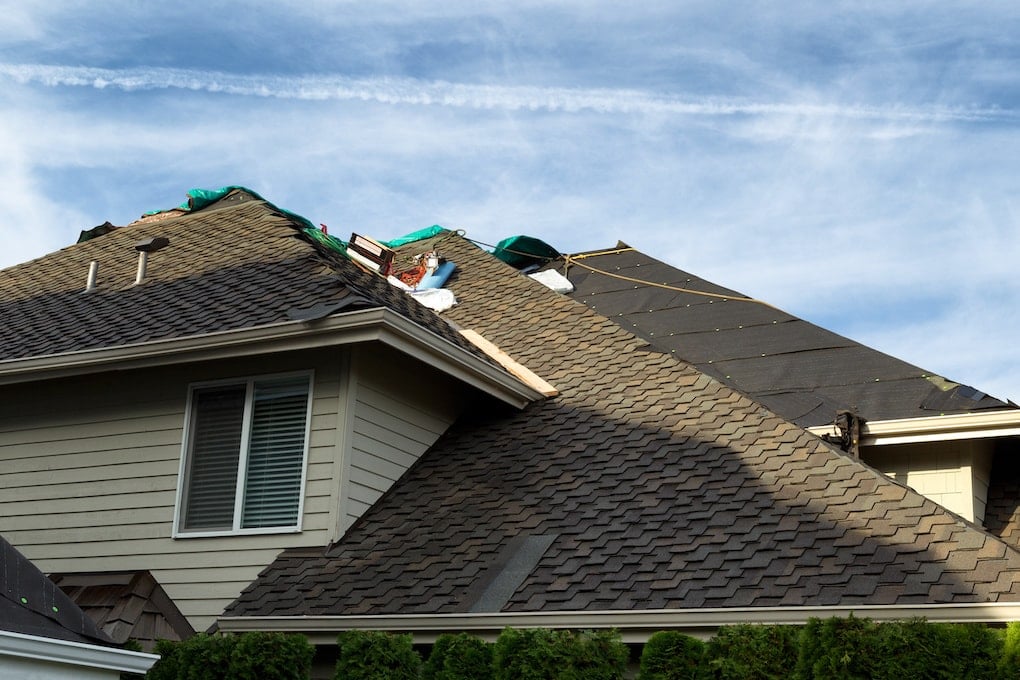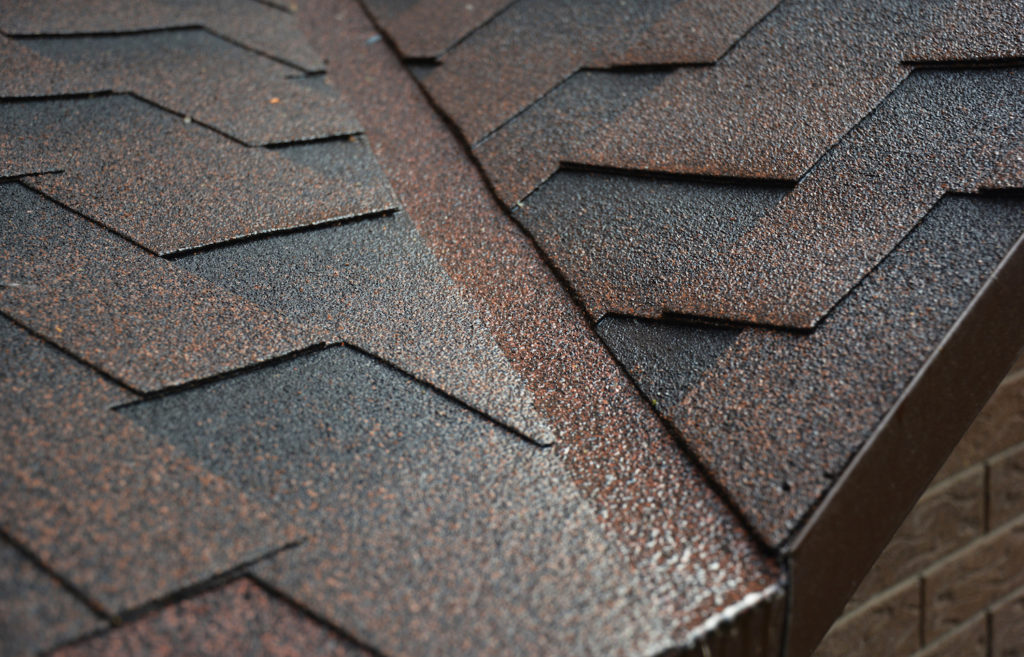Every homeowner knows about the basic parts of a roof like shingles, gutters, and a few vents— but that’s not all that makes up a roof!
Your roof requires a dozen different parts that create an entire roofing system that protects your home from the elements. Today we’re going to help you understand a bit more about what makes up your roof structure and why each is so important to the integrity of your home.
1. Shingles
Your shingles or roofing material are the cherry on top of your entire roofing system. While they’re the thing that gets all the glory, they’re just a part of the entire system. However, your shingles are also your roof’s first line of defense against the elements and need to be durable and well-maintained. Common types of roofing materials include:
- Asphalt shingles
- Standing seam metal roofing
- Metal shingles
- Cedar shakes
- Clay tile
- Slate tile
- Wood shingles
- Concrete tile
- Synthetic rubber slate tile
While some roofing materials last a lot longer and may be considered more durable than others, to ensure it lasts, you need to have the rest of your roofing components in good condition as well.

2. Roof Decking
The roof decking is the layer between your shingles and the actual frame of your roof. It’s usually made out of plywood or oriented strand board (OSB) and is nailed or screwed into the trusses of your roof. The decking provides a solid foundation for your shingles and helps keep them in place during high winds and extreme weather.
3. Underlayment
On top of the roof decking is the underlayment which is the waterproof barrier between your shingles and the roof decking. Underlayment is often made of felt paper or synthetic material and is installed in rows perpendicular to the direction of your roof trusses.
The benefits of the underlayment include:
- Leak protection should your shingles be compromised
- Waterproof layer to keep roof decking intact
- Smooth, clean surface for even roof installation
- Added protection against extreme weather

4. Fascia & Soffit
Your roof’s fascia is basically the roof’s edge and is often where the drip edge and gutters are installed. The fascia is essential as it’s where the shingles or roofing material meets the eaves of your roof. Beneath the fascia, in the overhang, is your soffit. These can be ventilated to ensure proper airflow from your attic, which leads us to our next important part of the roof— the vents.
5. Ventilation
Ventilation is key to keeping your attic free of moisture, mold, and that awful mildew smell. It also keeps your home’s temperature steady and removes smoke, fumes, and other noxious gasses from your home. There are a few different types of vents you may find on your roof.
Bathroom Vent (With Damper)
Bathroom vents are essential to remove shower steam to prevent mold growth and those unsightly “bathroom smells”— you know what we mean. A vent damper is like a loose hood over the vent that can lift up to release more air when needed. This might be why your vent is loud during a wind storm— it’s lifting or moving the vent damper.

Furnace Exhaust Vent
Furnace exhaust vents are important to keep carbon monoxide and other gasses from your home. These should be checked yearly to ensure they’re functioning properly. These vents allow noxious fumes from your furnace to vent safely.
Kitchen Exhaust Vent
Generally larger than the bathroom fan vent, your kitchen exhaust will be where the air picked up by your oven or microwave fan sucks up and is released out your roof. Your kitchen needs to have proper ventilation because of the gasses and steam produced while you cook.
Turbine Roof Vents
If you’ve ever looked up at a roof and seen the rounded wind turbine-looking things— those are turbine vents. You can often see these from inside your attic as well, spinning and breaking the light. These create attic airflow without allowing pests or animals to come into your attic.
The larger the attic, the more turbine vents you’ll need, which can sometimes be unsightly to homeowners who want their roof shingles to stand out. Ridge vents can be a great alternative to this.

Ridge Vent
Most homes with an attic need proper ventilation, and a ridge vent is by far the most efficient form of ventilation for your attic because it spans the entire length of the roof’s ridge. This constant ventilation helps prevent ice dams, keeps air circulating, and prevents moisture build-up— which can cause mold and mildew growth.

6. Plumbing Vents
Your plumbing also needs to be vented out the top of your roof to keep noxious fumes out of your home. People often wonder how you can have plumbing pipes come out the top of your house but not get filled with water. Well, each plumbing vent is fitted with a neoprene pipe boot that slips over it to stop water from getting in.
It’s important to note that this pipe boot can rot and is important to replace if you ever replace your roof. Also, if you have a suspicious plumbing leak you assume is a pipe, check your roof as it could be a cracked or loose plumbing vent that is leaking.

7. Skylights
Skylights are a beautiful addition to any home, but they do need to be regularly checked and sealed to prevent leaks.
An adequately installed skylight will have flashing installed around the base that needs to be checked for cracks or holes. Also, if you’ve ever looked up at your skylight on a sunny day and noticed heat streaks radiating from the glass, that’s a sign your skylight needs to be replaced.

8. Valley Flashing
The valleys of your roof are anywhere two sections of the roof meet and form a crease or valley. Valley flashing is important to prevent leaks from occurring at this edge. “W” metal flashing is the best for seamless, clean water flow from those valleys. It allows a solid surface for water to go, so it doesn’t sit on your precious shingles.

9. Chimney and Chimney Flashing
Chimneys are important to the function of many homes, but they are also a leading cause of roof leaks.
The base of your chimney is where it meets your roof, and this area needs to be properly sealed with flashing to prevent water infiltration. Over time, that caulking or sealant can crack and allow water in behind it, which can cause severe damage.
10. Gutters and Downspouts
Gutters and downspouts are an important part of your roofing system. They work together to direct water away from your home and foundation to prevent flooding and water damage. Keeping them free of debris helps water stay free-flowing and not backing up into your roof, causing water damage.

Hire a Professional to Handle All Parts of Your Roof
Keeping up with your roof’s repairs and maintenance can be difficult, especially with so many specific things to take care of. That’s why it’s important to hire a professional roofer you can rely on. Northface Construction is the choice contractor for all of your roofing needs.
From inspections to repairs to total roof replacement, we’re here to help you manage the most important parts of your roof. For a free inspection, reach out today!


